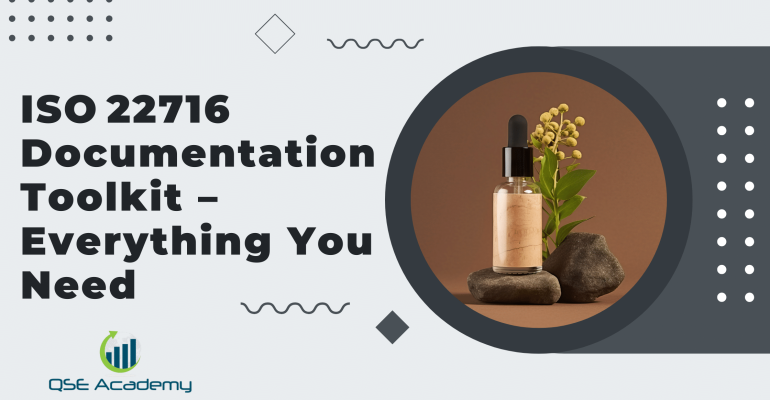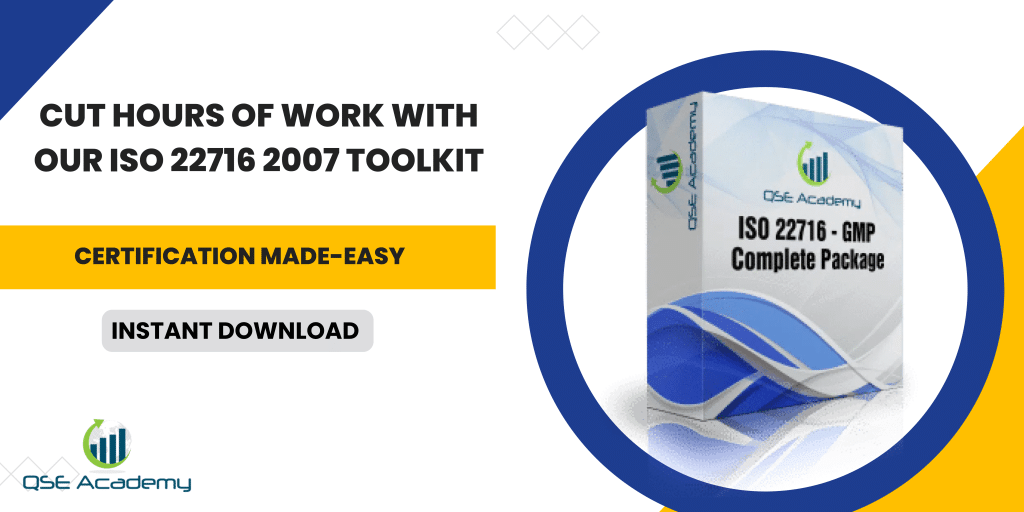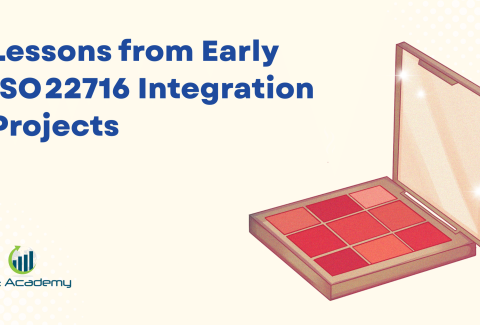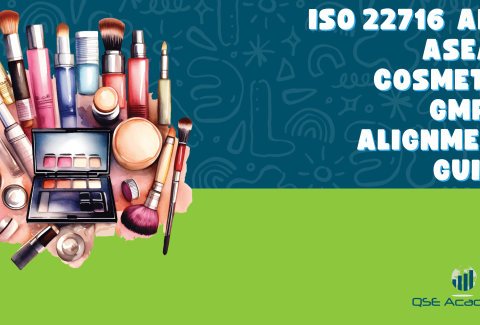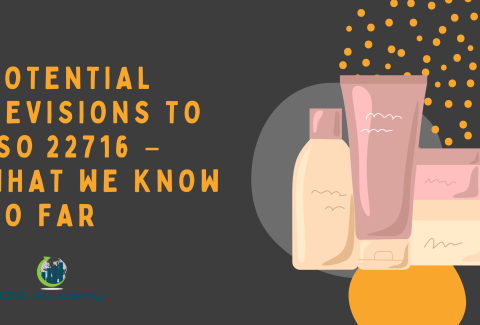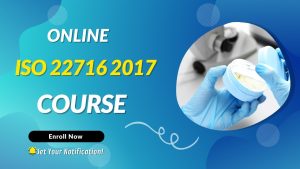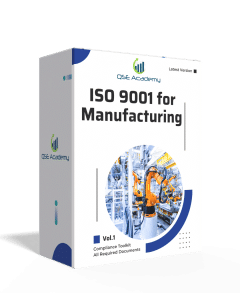ISO 22716 Documentation Toolkit – Everything You Need
Last Updated on October 24, 2025 by Hafsa J.
Building a Strong Documentation System for ISO 22716 Compliance
When it comes to ISO 22716, documentation isn’t just paperwork — it’s the entire foundation of your cosmetic manufacturing compliance. Every process, record, and approval flows through it. Without a clear documentation system, even the most disciplined production line can stumble during an audit.
In my experience working with cosmetic manufacturers, documentation is where most organizations either succeed or struggle. It’s rarely about the product itself — it’s about proving consistency, traceability, and control. Auditors don’t just want to see what you do; they want to see how you documented it.
This pillar guide brings everything together. It walks you through every essential piece of ISO 22716 documentation — from master records and cleaning SOPs to CAPA forms and digital control systems — and shows you how to make them work together as one cohesive system. You’ll see how proper documentation can protect your brand, strengthen your processes, and make every audit smoother and more predictable.
If you’re building or refining your cosmetic GMP system, this guide gives you the framework, structure, and practical insights to keep your documentation clear, compliant, and completely under control.
Understanding the Role of Documentation in ISO 22716
Documentation is the backbone of ISO 22716 — it’s how you prove that your cosmetic manufacturing processes are controlled, consistent, and compliant. The standard doesn’t just ask you to perform each step correctly; it requires you to record and demonstrate that every step was followed as intended.
Think of it this way: your documentation is the written evidence of your GMP culture. It connects what happens on the production floor with what’s reported to management and reviewed by auditors. Without clear, controlled documents, even the best manufacturing practices lose credibility.
Every procedure, form, and logbook exists for a reason.
-
SOPs define how tasks should be done.
-
Records and forms prove that tasks were actually performed.
-
Logs and reports show traceability — who did what, when, and with which materials.
When these documents work together, you build a transparent system where nothing gets lost between departments or overlooked during reviews.
Pro tip: Don’t create documents for the sake of compliance. Create them so they help your people work consistently and confidently. The best documentation systems feel practical, not bureaucratic.
Common mistake: Treating documentation as a one-time project during certification. ISO 22716 compliance depends on continuous control — meaning your documents must evolve as your processes, suppliers, and products do.
When documentation is properly structured, it stops being a burden. It becomes a living system — one that supports your operations, protects your customers, and helps your company grow with confidence.
The Core Documents Every ISO 22716-Compliant Facility Needs
ISO 22716 expects you to have a complete documentation framework that covers every stage of your operation — from raw-material intake to product release. The goal isn’t just to have “more documents.” It’s to have the right documents, built around traceability and process control.
Each category of documentation serves a specific purpose. When done right, these records fit together like pieces of a quality puzzle — defining procedures, capturing results, and proving control at every step.
Here’s what your core set should include.
3.1 Master Production and Batch Documentation
Your master and batch records form the heart of production control.
They describe how a product is made, the materials used, and the critical steps to be followed every time.
They ensure that:
-
Each batch follows the same validated recipe
-
Operators record real-time data — not after the fact
-
QA can trace raw materials back to their source
Pro tip: Keep your master-batch templates standardized. The clearer the format, the easier it is for operators to complete and reviewers to verify.
3.2 Equipment Cleaning and Maintenance Procedures
Every piece of equipment touching your product must have a defined cleaning and maintenance procedure.
These SOPs protect your products from cross-contamination and breakdown-related delays.
Include:
-
Detailed cleaning steps
-
Approved cleaning agents
-
Maintenance frequency and responsible personnel
Common pitfall: Relying on verbal instructions instead of written SOPs. Even minor differences in cleaning routines can lead to inconsistent results.
3.3 Raw-Material Specifications and Supplier Data
Your documentation should clearly define what each raw material must meet before it’s accepted into production.
A strong specification sheet lists:
-
Material name, code, and supplier
-
Physical and chemical properties
-
Microbiological limits and purity requirements
-
Storage and handling instructions
When specifications are consistent and approved, supplier control becomes much easier — and your incoming-inspection process becomes faster and more defensible.
3.4 Deviation and CAPA Records
No system is perfect. That’s why every compliant documentation toolkit must include a simple, traceable way to record deviations and corrective actions.
Each record should capture:
-
What happened
-
Why it happened
-
What was done to fix it
-
How you’ll prevent it next time
Handled correctly, these forms turn issues into improvement opportunities — not audit weaknesses.
3.5 Document Control and Version Management
Even the best SOPs lose value if you can’t prove which version is current.
That’s where document control comes in.
A proper system ensures:
-
Every document has an owner, version number, and approval trail
-
Old versions are archived but never lost
-
Employees always work from the latest approved file
Whether you manage documents on paper or electronically, version control is what separates a compliant facility from a confused one.
When these core documents are in place and working together, you create a self-correcting quality system. Operators know exactly what to do, QA can verify every action, and auditors can see the logic behind your controls — without flipping through a mountain of paper.
Integrating Records, SOPs, and Forms into One Controlled System
Strong documentation doesn’t come from having hundreds of separate files. It comes from how those files connect.
ISO 22716 expects your records, SOPs, and forms to work together in a single, traceable system — where information flows logically from one stage of production to the next.
Think of it as a chain of evidence.
-
SOPs define how the work should be done.
-
Forms and logs capture what actually happened.
-
Records compile that data for verification, review, and release.
When those links are clear and consistent, you can trace any product from start to finish — ingredients, equipment, personnel, and approvals — without confusion or gaps.
Creating a Documentation Matrix
A documentation matrix is a simple but powerful way to keep everything organized.
It lists every controlled document, who owns it, its version, and its review frequency.
Your matrix might include:
-
SOP titles and document numbers
-
Responsible department or author
-
Next review date
-
Related records or forms
Pro tip: Keep this matrix living and digital. When QA updates a document, the matrix updates automatically — so you never lose sight of what’s current or pending review.
Consistency in Format and Language
ISO 22716 doesn’t dictate how your documents should look, but consistency matters.
Use uniform headers, numbering, and formatting across all documents. It makes review easier and prevents errors caused by misunderstanding.
Common mistake: Mixing formats between departments. When Production, QA, and Maintenance all use different templates, confusion creeps in fast.
Connecting SOPs and Records Through Version Control
Every form or record should reference the specific SOP that governs it — and both should share the same version discipline.
If the SOP changes, the form changes too. That’s how you maintain alignment and avoid obsolete instructions being used in daily work.
Pro tip: Include a “linked document” field on your forms. It tells users exactly which procedure supports that record — no guessing, no mix-ups.
Bringing It All Together
When you integrate SOPs, records, and forms into one controlled system, you create more than compliance. You create clarity.
Teams understand expectations, QA can verify everything instantly, and auditors see a coherent story — not a pile of disconnected files.
Well-structured documentation doesn’t just check a box. It builds trust, both inside your organization and with every client or regulator who reviews your system.
Digital vs Manual Documentation Systems
One of the biggest decisions in managing ISO 22716 documentation is choosing how to handle it — manually on paper or through a digital system. Both can be compliant. The key is understanding which approach fits your organization’s size, complexity, and resources.
Manual Documentation Systems
Manual systems are familiar, simple, and don’t require specialized software. They work well for small operations with limited product lines.
But they come with challenges: physical storage, version control, and human error.
In a paper-based setup, you’ll need to:
-
Print and distribute approved documents to relevant areas.
-
Collect, file, and archive completed forms.
-
Track revisions manually to ensure everyone uses the latest version.
It’s doable, but as production scales, this process becomes difficult to sustain. Paper systems are slower to update and harder to audit efficiently.
Digital Documentation Systems
Digital or electronic document-control systems streamline everything ISO 22716 requires — version tracking, approvals, training links, and archiving — all in one platform.
You can control access by role, automate review reminders, and keep a full audit trail without extra effort.
Digital systems also reduce duplication and loss. Operators can access procedures instantly, QA can approve updates remotely, and auditors can review records without digging through binders.
Pro tip: Start digital where it makes the biggest impact. Convert high-volume, frequently revised documents first — like SOPs and batch records — before moving everything else.
Choosing the Right Approach
You don’t have to go all in at once. Many manufacturers use a hybrid system during transition: digital masters for controlled documents and paper forms for shop-floor data until full integration is practical.
When choosing your path, consider:
-
How many documents you maintain.
-
How often revisions occur.
-
How tech-ready your team is.
-
Your long-term scalability goals.
Common mistake: Investing in advanced software but skipping user training. Technology only supports compliance when people understand how to use it.
The Bottom Line
Both manual and electronic systems can meet ISO 22716 requirements — but a well-implemented digital system saves time, reduces errors, and strengthens traceability.
If your facility is growing, going digital isn’t just convenient; it’s strategic. It positions your quality system for faster approvals, smoother audits, and continuous improvement.
Maintaining and Reviewing Your Documentation System
Creating documentation is only half the work. Keeping it accurate, relevant, and up to date is what keeps your ISO 22716 system alive.
A document that’s outdated or unreviewed can be just as risky as having none at all.
ISO 22716 expects every controlled document to be reviewed periodically to confirm it still reflects current practice. This isn’t a formality—it’s a safeguard. Processes evolve, suppliers change, and regulations update. Your documentation should reflect those changes in real time.
Set a Review Schedule That Works
Assign a clear review frequency for every document type.
For example:
-
SOPs: every 12 months or after any process change
-
Specifications: after supplier or formulation updates
-
Forms and Records: when a process improvement affects data collection
Pro tip: Add a “next review date” field in your document-control system. Automated reminders will prevent overdue reviews from slipping through.
Define Responsibilities
Every document should have an owner—someone accountable for keeping it current.
Typically:
-
The process owner drafts or revises the document.
-
QA reviews for accuracy and compliance.
-
Management approves and releases the new version.
Having this structure avoids delays and ensures nothing gets revised without proper oversight.
Use Revisions as a Learning Tool
Each revision tells a story. It shows where your system improved, simplified, or corrected a gap.
Keeping a clear revision history builds trust with auditors—they can see your progress and trace decisions over time.
Example: A cosmetic lab reduced recurring deviations by tightening its review cycle and documenting each SOP change with a clear “reason for revision” note. That small step helped them demonstrate continuous improvement during their next audit.
Audit and Feedback Integration
Internal audits are one of the best triggers for document review. When findings arise, review related SOPs and forms immediately—don’t wait for the annual cycle.
And don’t overlook team feedback. Operators often spot gaps or ambiguities first; their input keeps your documentation practical and user-friendly.
Keep It Simple and Consistent
Complex review systems tend to collapse under their own weight.
Aim for a process that’s straightforward:
-
Review on schedule.
-
Record the outcome.
-
Update and re-approve when needed.
That rhythm keeps your documentation trustworthy without slowing down daily work.
The Real Goal
Reviewing documents isn’t about satisfying auditors; it’s about maintaining confidence in your operations.
When every document in your system is current, approved, and aligned with reality, you can face any inspection knowing your evidence speaks for itself.
Training, Accessibility, and Continuous Improvement
Even the best documentation system will fail if people don’t know how to use it.
ISO 22716 isn’t only about creating controlled documents—it’s about ensuring that everyone understands and applies them correctly. That’s why training and accessibility are as important as the documents themselves.
Training for Consistent Understanding
Each controlled document should have a training plan attached to it. When new or revised SOPs are released, staff should be trained before implementation. This ensures that the procedure on paper matches what actually happens in practice.
Training doesn’t have to be complicated.
-
Short refresher sessions or toolbox talks keep teams aligned.
-
Recorded demonstrations or micro-learning clips can reinforce consistency.
-
Quizzes or acknowledgment forms show understanding and accountability.
Pro tip: Link your training records directly to your document-control system. When someone completes training, the system automatically records who’s qualified to perform specific tasks.
Ensuring Easy Accessibility
Accessibility is what transforms documentation from a compliance tool into an operational asset.
Employees should always be able to find the current version of an SOP without guesswork. Whether through printed copies in controlled binders or a digital dashboard, the latest approved documents must be clearly identified and easy to access.
Common mistake: Having multiple copies of SOPs scattered across departments with no control over which version is being used. A single, centralized source—digital or physical—avoids confusion and ensures uniformity.
Encouraging Feedback and Ownership
People using the documents daily are often the first to notice if a process needs updating. Encourage operators, lab staff, and supervisors to share observations about unclear steps or potential improvements.
Their feedback helps you refine documents and keeps your quality system practical and realistic.
Pro tip: Add a simple “Feedback or Improvement Suggestion” section to your SOP or electronic portal. It gives employees an easy way to contribute while creating a record of continuous improvement.
Continuous Improvement Through Review and Training
ISO 22716 emphasizes continual enhancement of your quality system. Each document update or CAPA investigation should feed into ongoing training and process improvement.
Over time, your documentation becomes more refined, your processes more efficient, and your team more confident in how they work.
Well-trained people using clear, current documents make compliance effortless. Instead of scrambling to prepare for audits, you’ll already be operating at audit-ready standards every day.
FAQs: ISO 22716 Documentation Toolkit
Q1. What are the minimum documents required for ISO 22716 compliance?
At a minimum, your system should include Standard Operating Procedures (SOPs), batch production records, raw-material specifications, equipment cleaning and maintenance logs, deviation and CAPA forms, and document-control records.
Together, these form the backbone of your Good Manufacturing Practices — proving consistency, traceability, and accountability.
Q2. Can documentation under ISO 22716 be fully digital?
Yes, absolutely. ISO 22716 doesn’t require paper documentation — it requires controlled documentation.
As long as your electronic system has proper access control, version tracking, and audit trails, digital files are fully acceptable and often preferred for efficiency and traceability.
Q3. How often should documents be reviewed or updated?
At least once a year, or whenever a process, supplier, or product changes.
Regular reviews ensure your documentation reflects what’s actually happening on the floor — not what used to happen a year ago.
Q4. Who should approve ISO 22716 documents?
Typically, the process owner prepares the document, QA reviews it for compliance, and top management gives final approval.
This ensures a balance between operational accuracy and regulatory control.
Q5. What’s the best way to train staff on new or revised documents?
Keep it simple and relevant. Short training sessions or on-the-job demonstrations work better than long theoretical sessions.
Focus on what changed, why it matters, and how it affects day-to-day work. Always record attendance and acknowledgment in your document-control system.
Clear answers to these questions help reinforce one of ISO 22716’s key principles: documentation isn’t just about compliance — it’s about clarity, control, and continuous improvement.
Documentation as the Foundation of GMP Excellence
Strong documentation is the foundation of every successful ISO 22716 system. It connects people, processes, and products — turning everyday activities into verifiable evidence of control and quality.
When your documentation is clear, current, and consistent, compliance becomes second nature. Audits feel organized, communication between departments improves, and your entire operation runs with more confidence and less stress.
In my experience, once a company gets its documentation under control, everything else falls into place. Processes stabilize, teams understand expectations, and quality decisions are made faster and with greater accuracy. That’s the real value of ISO 22716 — not just meeting the standard, but building a system that supports growth, safety, and trust.
If you’re ready to streamline your documentation process, start with a strong foundation.
Download the ISO 22716 Documentation Toolkit — complete with templates, forms, and practical examples — and build a documentation system that’s not only compliant, but genuinely effective.
Whether it’s ISO 9001, ISO 22000, or the cosmetics-focused ISO 22716, I’ve spent my career I’m not here to call myself an expert—I prefer “enthusiast” because I truly love what I do. When I’m not writing about standards, you’ll probably find me playing Piano 🎹, connecting with people, or diving into my next big project💫. I’m an engineer specialized in the food and agricultural industry
make ISO standards less intimidating and more approachable for everyone.
turning complex jargon into clear, actionable steps that businesses can actually use.
There’s something incredibly rewarding about helping people navigate food safety and quality management systems
in a way that feels simple, practical, and even enjoyable.
I have a Master’s in QHSE management and over 12 years of experience as a Quality Manager
I’ve helped more than 15 companies implement ISO 9001, ISO 22000, ISO 22716, GMP, and other standards
My clients include food producers, cosmetics manufacturers, laboratories, and service companies
I believe quality systems should be simple, useful, and efficient.

